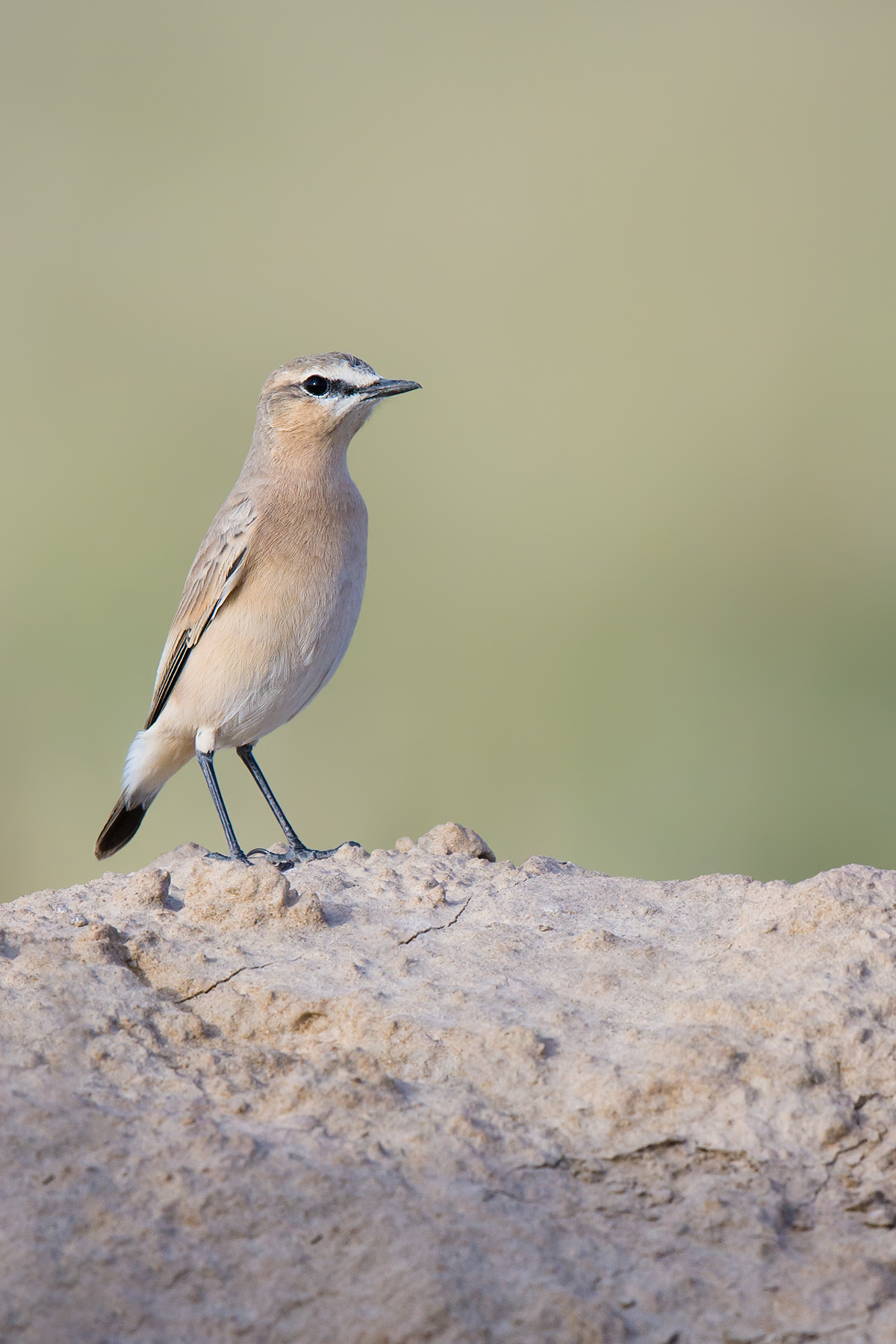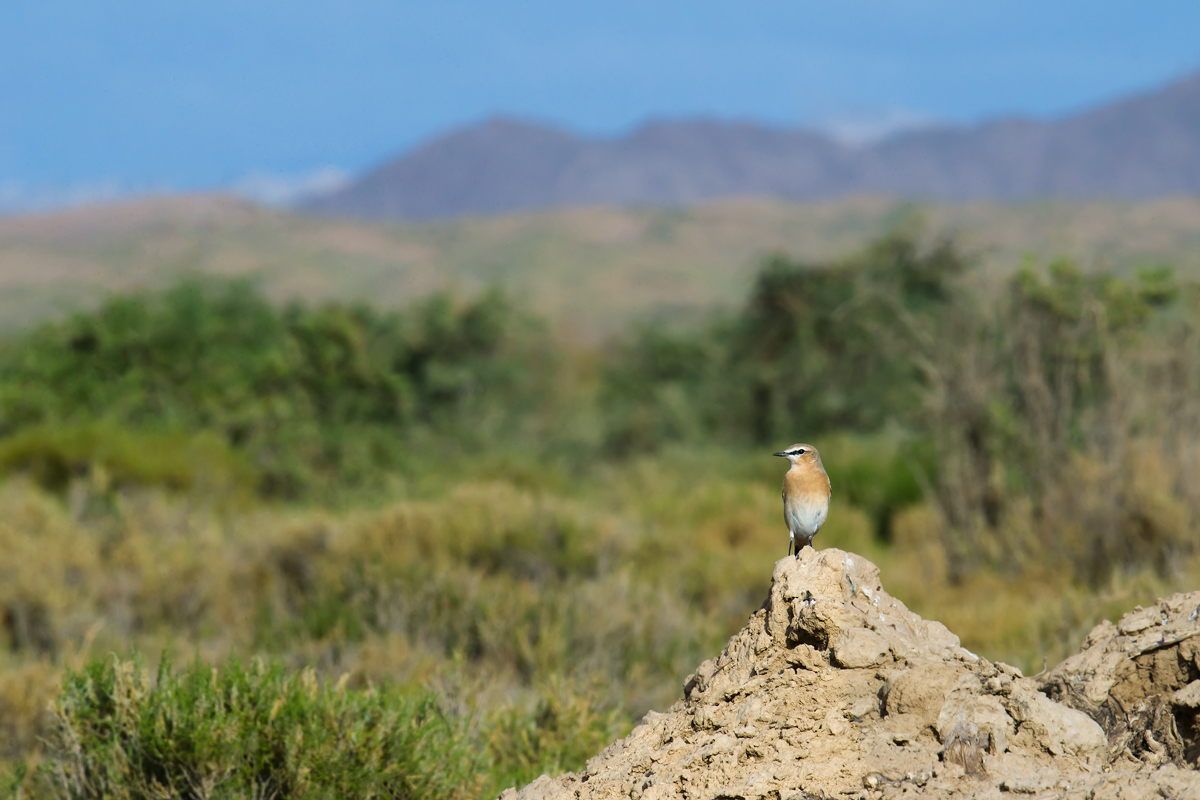


Isabelline Wheatear Oenanthe isabellina breeds southeast Europe to China (Xinjiang, Qinghai, Gansu, and western Inner Mongolia to northern Shaanxi). Strongly migratory, wintering west Africa to Thailand. HABITAT & BEHAVIOR Breeds in deserts and semi-deserts and on sparsely vegetated mountain steppes, to 3500 m (11,480 ft.). Runs on ground after prey; also pounces from perch. ID & COMPARISON Monotypic; sexes similar. Plainly colored; mainly sandy-brown above and buffish-white below. Resembles non-breeding and especially first-winter Northern Wheatear Oenanthe oenanthe, but slightly larger and has longer wings and legs and shorter tail, thus more upright stance. Supercilium whiter before eye, not behind, as in first-winter Northern. Ear coverts always yellowish-brown; never shows black bandit’s mask (male Northern) or even a hint of a mask (female Northern). Black loral line fainter in female, absent in first-winter. Shows more white on tail than Northern, and black tail band is broader and black vertical bar shorter, resulting in a more stunted inverted T. Black alula often creates marked contrast with sandy-brown wings and is a useful way to separate from first-winter Northern. BARE PARTS Bill, feet black. VOICE During male’s fluttering display flight utters distinctive song consisting of whistles, chack notes, and mimicry of other passerines. — Craig Brelsford
THE WHEATEARS OF CHINA
shanghaibirding.com has research on all five species of wheatear in China. Click any link:
Northern Wheatear Oenanthe oenanthe
Isabelline Wheatear O. isabellina
Desert Wheatear O. deserti
Pied Wheatear O. pleschanka
Variable Wheatear O. picata
ACKNOWLEDGEMENTS
Daniel Bengtsson served as chief ornithological consultant for Craig Brelsford’s Photographic Field Guide to the Birds of China, from which this species description is drawn.
